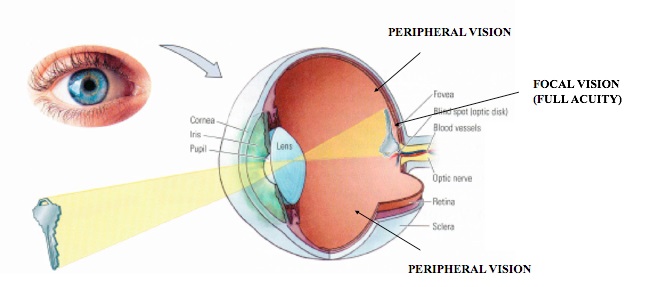|
During Fixations and Pursuit Tracking Gaze Humans Are Able to See Clearly Over Only 2-3 degrees of Visual Angle
Focal or foveal vision – Eye trackers record foveal vision. The cursor shown on each frame reveals what the athlete is able to see clearly. The fovea is shown
in the figure below and is a small region located at the back of each eye. Only when the objects and locations are registered on the fovea does full acuity (or clarity) occur.
For this reason, human clear vision is restricted to only 2-3 degrees of visual angle, which is about the width of your thumb located on a distant object with the arm extended.
Athletes have to learn to control their gaze precisely in order to perform well.
Ambient or peripheral vision – the remainder of the retina registers peripheral or ambient vision. Objects or locations on this region of the eye appear blurred.
The peripheral system is good at detecting motion, and is also adept in low light. The focal and ambient systems work together and provide a stable view of the task environment.

|
